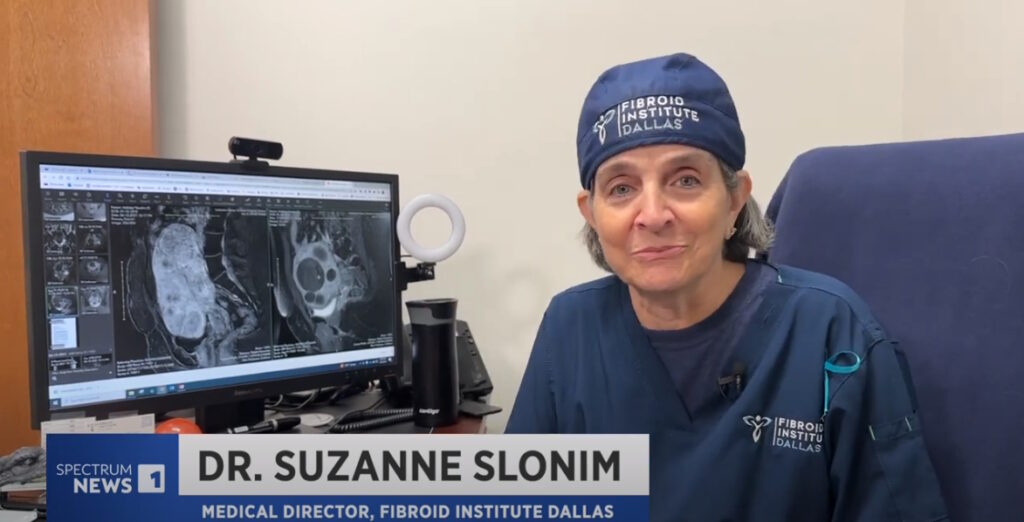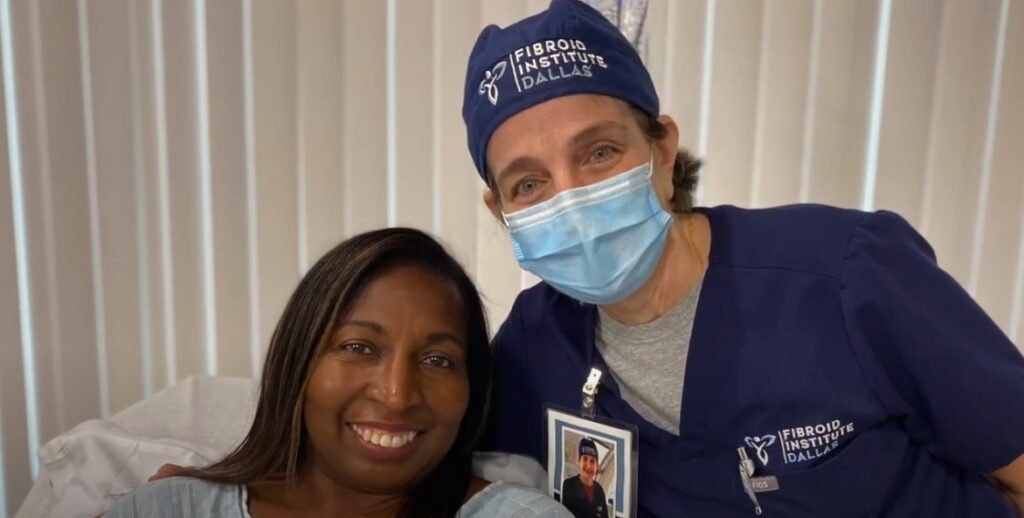July is Uterine Fibroid Awareness Month. Reporter Lupe Zapata, Dr. Suzanne Slonim, and fibroid patient Kendra are raising awareness to help all women with fibroids.
For more details on this story, and Fibroid Awareness Month, watch the video.
For the last eight years, Little Elm resident Kendra lived with a discomfort not too many of her friends or family knew about. She dreaded her menstruation every month because it was followed by discomfort for three or more days. She didn’t want to discuss the considerable bleeding or the ongoing pelvic pain in public.
“I would just stay in bed, no one understood why I would be so antisocial,” said Kendra.
The cause of back pain, frequent urination, abnormal uterine bleeding, and pelvic pain was identified as Kendra’s fibroids. Fibroids can cause reproductive problems in women who are attempting to conceive, such as miscarriage, early labor, and infertility.
She was aware that she had uterine fibroids, but she was afraid to get any form of treatment, so she put up with the agony, convincing herself it was nothing unusual.
“As they got bigger, they got worse. The pain is worse,” said Kendra “It almost feels like somebody hit you with a hammer in your stomach, that’s the best way I can describe it. It’s not pleasant at all.”
Three out of four women have uterine fibroids, which are benign tumors that most frequently develop between ages 30 and 50. Uterine fibroids will affect over 80% of Black women and 70% of white women by the age of 50. Black women are about seven times more likely to have fibroid surgery and are frequently afflicted at an earlier age.
A hysterectomy, or surgery to remove the uterus, is a typical treatment. Kendra and other women of color have a 2.4 greater likelihood of having to go through this grueling treatment. Fortunately, for Kendra she had other options.
“I’m still young, I don’t want to go into early menopause unnecessarily,” said Kendra.
She was given the option of having a hysterectomy by her physician, but she opted to have one of her larger fibroids killed using a minimally invasive treatment called uterine fibroid embolization (UFE).
“This is an alternative to allow me to keep my ovaries and my uterus, and all my hormones that’s associated with this, so I can be normal. I don’t want to take pills for the next ten or eleven years until I actually menopause,” said Kendra.
She was relieved to find that the UFE would only take approximately an hour when she contacted Dr. Suzanne Slonim at Fibroid institute Dallas, and she felt secure knowing she would be asleep during the surgery.
“I was a lot less nervous when I learned the recovery was only about a week,” said Kendra.
“The surgical equivalent to this takes six to eight weeks to recover,” said Dr. Slonim. “While I’m not making a big incision in the body, I am killing the fibroid and women do need to remember that they’ve been through a big process and they can’t go out and run a marathon this week. Maybe next week, but not this week.”
Dr. Slonim has advocated for fibroid awareness and letting women know their alternatives to politicians in Texas as well as the City of Dallas.
Kendra wants to use her experience preparing for and having the UFE treatment to educate other women who could be in a similar circumstance. Dr. Slonim expressed her pride at Dallas leaders raising awareness of this widespread problem and expressed hope that this will serve as a starting point for discussions that result in solutions.
Fibroid Institute wants to empower and educate women so they will know that fibroid removal surgery is not their only option. Normalizing the conversation about periods and fibroid symptoms will increase awareness for all women.
Special thank you to @SpectrumNews1DFW for producing this amazing story!






